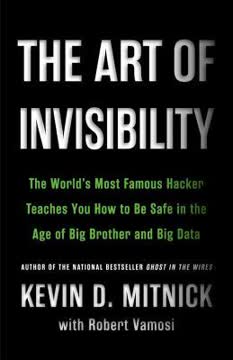Key Takeaways
1. Social engineering exploits human psychology to breach security
"Security is not a product, it's a process." Moreover, security is not a technology problem—it's a people and management problem.
Human vulnerability. Social engineering attacks target the weakest link in any security system: human beings. Unlike technological vulnerabilities, human weaknesses cannot be patched or updated. Social engineers exploit natural human tendencies such as the desire to be helpful, the tendency to trust, and the fear of getting into trouble.
Psychological manipulation. These attacks rely on influencing and deceiving people rather than hacking systems directly. Common tactics include:
- Impersonation of authority figures
- Creating a sense of urgency or crisis
- Appealing to vanity or greed
- Exploiting the human desire to be liked or appreciated
By understanding and leveraging these psychological principles, social engineers can bypass even the most sophisticated technological defenses.
2. Trust is the foundation of successful social engineering attacks
"Once he's got your trust, the drawbridge is lowered and the castle door thrown open so he can enter and take whatever information he wants."
Building rapport. Social engineers excel at quickly establishing trust and rapport with their targets. They often use techniques such as:
- Name-dropping of known employees or executives
- Demonstrating insider knowledge of company procedures or jargon
- Expressing shared interests or experiences
- Providing small favors or assistance to create a sense of reciprocity
Exploiting established trust. Once trust is established, the attacker can more easily:
- Request sensitive information
- Gain physical access to restricted areas
- Convince targets to take actions that compromise security
The most dangerous social engineers are those who can maintain a convincing act over extended periods, gradually increasing the level of trust and access they have within an organization.
3. Information gathering is crucial for crafting convincing pretexts
"Meticulous research is my own brand of caution, so I could talk to anybody that challenged me, with as much knowledge as any employee."
Reconnaissance phase. Before launching an attack, social engineers conduct thorough research on their target organization and individuals. This may include:
- Studying the company website, annual reports, and press releases
- Examining publicly available databases and social media profiles
- Dumpster diving for discarded documents
- Making innocuous phone calls to gather information from employees
Building a knowledge base. The information gathered allows the attacker to:
- Understand the organization's structure and culture
- Identify potential targets and their roles
- Learn company-specific terminology and procedures
- Craft believable scenarios and pretexts for their attacks
The more detailed and accurate the attacker's knowledge, the more convincing their impersonation and the higher their chances of success.
4. Pretexting: The art of creating a scenario to manipulate targets
"A good social engineer, on the other hand, never underestimates his adversary."
Crafting personas. Pretexting involves creating a fictional scenario and assuming a role to manipulate the target. Effective pretexts often involve:
- Impersonating authority figures (e.g., IT support, executives, vendors)
- Creating urgent or time-sensitive situations
- Offering something the target wants or needs
Adaptability is key. Skilled social engineers can:
- Quickly adjust their pretext based on the target's responses
- Have multiple backup scenarios ready
- Improvise convincing details on the spot
The most successful pretexts are those that seem entirely plausible and align with the target's expectations and experiences within their organizational role.
5. Tailored tactics: Exploiting specific human tendencies
"People don't give much thought to what they're discarding at home: phone bills, credit card statements, medical prescription bottles, bank statements, work-related materials, and so much more."
Psychological triggers. Social engineers employ various tactics tailored to exploit specific human tendencies:
- Authority: Impersonating figures of power to compel compliance
- Liking: Building rapport to make the target more agreeable
- Reciprocation: Offering favors to create a sense of obligation
- Consistency: Leveraging people's desire to appear consistent with their commitments
- Social proof: Using peer pressure or the actions of others to influence behavior
- Scarcity: Creating a sense of urgency or limited availability
Targeting vulnerabilities. Attackers often focus on:
- New employees who may not be familiar with security procedures
- Lower-level staff who are eager to please or fear authority
- IT support personnel who are conditioned to be helpful
- Employees under stress or time pressure
By tailoring their approach to the specific psychological vulnerabilities of their targets, social engineers significantly increase their chances of success.
6. Physical security is as crucial as digital defenses
"Dumpster diving is a term that describes pawing through a target's garbage in search of valuable information. The amount of information you can learn about a target is astounding."
Beyond digital. While much focus is placed on cybersecurity, physical security remains a critical vulnerability. Social engineers exploit weak physical security through:
- Tailgating: Following authorized personnel into restricted areas
- Impersonation: Using fake badges or disguises to gain entry
- Dumpster diving: Searching through discarded documents for sensitive information
Holistic approach. Comprehensive security must address:
- Access control systems and procedures
- Employee awareness and training on physical security
- Secure document and media disposal practices
- Visitor management and escort policies
Organizations must recognize that a breach in physical security can easily lead to compromise of digital systems and sensitive information.
7. Employee training and awareness are the best countermeasures
"Employees must see that senior management is fully committed to the program. That commitment must be real, not just a rubber-stamped 'We give our blessings' memo."
Continuous education. Effective defense against social engineering requires:
- Regular security awareness training for all employees
- Simulated social engineering attacks to test and reinforce training
- Clear communication of security policies and procedures
- Fostering a culture of security consciousness
Empowering employees. Training should focus on:
- Recognizing common social engineering tactics
- Understanding the value of the information they handle
- Knowing proper procedures for verifying identities and authorizations
- Feeling confident in reporting suspicious activities
The goal is to transform employees from potential vulnerabilities into an active and aware first line of defense against social engineering attacks.
8. Verification procedures are essential to thwart social engineers
"Verify, verify, verify. Any request not made in person should never be accepted without verifying the requestor's identity—period."
Multi-step verification. Robust verification procedures should include:
- Callback procedures to confirm requests using known contact numbers
- Multi-factor authentication for sensitive systems or information access
- Established protocols for verifying the identity and authority of requesters
- Regular audits and updates of verification procedures
Consistency is crucial. Organizations must:
- Ensure all employees understand and follow verification procedures
- Apply procedures consistently, regardless of the perceived authority or urgency of the request
- Create a culture where following proper verification is praised, not seen as an inconvenience
Effective verification procedures create significant barriers for social engineers, forcing them to overcome multiple checkpoints and increasing the risk of detection.
9. Security policies must be comprehensive and consistently enforced
"Drafting and distributing security policies is a fundamental step toward reducing risk, but in most cases, compliance is necessarily left up to the individual employee."
Policy framework. Effective security policies should address:
- Data classification and handling procedures
- Access control and authentication requirements
- Incident reporting and response protocols
- Physical security and visitor management
- Acceptable use of company resources
- Social media and external communication guidelines
Implementation and enforcement. To be effective, policies must be:
- Clearly communicated and easily accessible to all employees
- Regularly updated to address new threats and technologies
- Consistently enforced across all levels of the organization
- Supported by technological controls where possible (e.g., password complexity requirements)
Well-designed and properly implemented security policies create a framework that guides employee behavior and reduces the attack surface for social engineers.
10. Balancing security with productivity is an ongoing challenge
"Corporate security is a question of balance. Too little security leaves your company vulnerable, but an overemphasis on security gets in the way of attending to business, inhibiting the company's growth and prosperity."
Finding equilibrium. Organizations must strike a balance between:
- Implementing robust security measures
- Maintaining operational efficiency and employee productivity
- Fostering a positive and trusting work environment
Adaptive approach. Achieving this balance requires:
- Regular risk assessments to identify critical assets and vulnerabilities
- Tailoring security measures to specific roles and departments
- Implementing security controls that minimize disruption to workflows
- Gathering feedback from employees on the impact of security measures
- Continuously refining policies and procedures based on real-world effectiveness
The goal is to create a security posture that protects the organization's assets without unduly hindering its ability to conduct business and innovate.
Last updated:
FAQ
What's The Art of Deception about?
- Focus on Social Engineering: The book explores how social engineers manipulate individuals to obtain confidential information, emphasizing psychological tactics over technical hacking.
- Real-Life Examples: Kevin Mitnick shares anecdotes and case studies that demonstrate the methods used by social engineers, making the content engaging and relatable.
- Preventive Measures: It provides practical advice on protecting oneself and organizations from social engineering attacks, highlighting the importance of the human element in security.
Why should I read The Art of Deception?
- Understanding Vulnerabilities: The book helps readers recognize psychological tactics used by social engineers, crucial for anyone in security, IT, or management.
- Practical Guidance: Offers actionable strategies and policies to safeguard sensitive information, making it a valuable resource for individuals and organizations.
- Engaging Narrative: Mitnick’s storytelling makes complex security concepts accessible, with real-life scenarios that educate and engage readers.
What are the key takeaways of The Art of Deception?
- Human Factor is Weakest Link: Emphasizes that the human element is often the most vulnerable aspect of security systems, regardless of technological advancements.
- Social Engineering Techniques: Details tactics like pretexting, baiting, and reverse social engineering, essential for understanding and preventing attacks.
- Importance of Training: Highlights the need for continuous education and training to foster a culture of vigilance against social engineering attacks.
What is the definition of social engineering in The Art of Deception?
- Manipulation for Information: Defined as using influence and persuasion to deceive individuals into revealing confidential information, often by exploiting trust.
- Exploitation of Trust: Relies heavily on exploiting trust and human emotions, making it a powerful tool for attackers.
- Non-Technical Approach: Targets the human element rather than technical vulnerabilities, presenting a unique and often overlooked threat.
What are some social engineering techniques discussed in The Art of Deception?
- Pretexting: Involves creating a fabricated scenario to obtain information, such as posing as a tech support employee.
- Baiting: Entices victims with promises of something desirable to lure them into providing personal information or downloading malicious software.
- Reverse Social Engineering: The attacker creates a problem that the victim needs help with, increasing the likelihood of compliance with requests for sensitive information.
How does The Art of Deception relate to current cybersecurity threats?
- Relevance of Social Engineering: Techniques remain highly relevant as social engineering continues to be a primary method for cybercriminals.
- Evolving Threat Landscape: Provides insights into how attackers adapt strategies to exploit new vulnerabilities in technology and human behavior.
- Importance of Awareness: Underscores the need for ongoing employee training and awareness, as many threats rely on manipulating human behavior.
How can organizations prevent social engineering attacks as suggested in The Art of Deception?
- Employee Training: Regular training programs to educate employees about social engineering tactics and recognition are crucial.
- Strict Verification Procedures: Establish protocols for verifying the identity of anyone requesting sensitive information, using methods like callback verification.
- Data Disposal Policies: Implement strict policies for disposing of sensitive information to prevent attackers from retrieving valuable data from discarded materials.
What are some examples of social engineering attacks from The Art of Deception?
- Bank Heist Example: Stanley Mark Rifkin stole $10 million by memorizing a security code and impersonating a bank official, showcasing deception's effectiveness.
- Phishing Scams: Discusses phishing attacks where emails appear legitimate, tricking victims into providing sensitive information.
- Corporate Espionage: Stories of individuals infiltrating companies by posing as employees, illustrating the ease of exploiting organizational weaknesses.
What is the significance of the human element in security as discussed in The Art of Deception?
- Vulnerability to Manipulation: Humans are often the most vulnerable part of any security system, easily manipulated through trust and emotional appeals.
- False Sense of Security: Over-reliance on technology can create a false sense of safety, as the human element can bypass defenses if not vigilant.
- Need for a Security Culture: Emphasizes fostering a culture of security within organizations, encouraging caution and proactive protection of sensitive information.
What are some common social engineering methods discussed in The Art of Deception?
- Pretexting: Creating a fabricated scenario to obtain information, often by posing as a trusted figure.
- Phishing: Sending fraudulent emails that appear legitimate to trick individuals into revealing personal information.
- Shoulder Surfing: Observing someone entering sensitive information to gain unauthorized access to accounts or systems.
How does Mitnick suggest organizations can prevent social engineering attacks?
- Implement Security Policies: Establish clear policies outlining procedures for verifying identities and handling sensitive information.
- Conduct Regular Training: Continuous training programs to educate employees about social engineering tactics and security awareness.
- Encourage Reporting: Foster an environment where employees are encouraged to report suspicious activities or requests.
What are the best quotes from The Art of Deception and what do they mean?
- “Security is not a product, it's a process.”: Emphasizes that effective security requires ongoing effort and vigilance, not just reliance on technology.
- “The human factor is truly security's weakest link.”: Highlights that sophisticated security measures can be undermined by human error or manipulation.
- “Your trash may be your enemy's treasure.”: Reminds that discarded information can be exploited, stressing the need for proper disposal methods.
Review Summary
The Art of Deception receives mixed reviews, with praise for its insights into social engineering and cybersecurity vulnerabilities. Readers appreciate Mitnick's real-world examples and practical advice, though some find the content repetitive and outdated. The book is valued for raising awareness about human-based security risks and providing strategies to mitigate them. Critics note its focus on corporate environments and occasional condescending tone. Despite its age, many readers still find the core concepts relevant and eye-opening, recommending it as an introduction to social engineering tactics.
Similar Books










Download PDF
Download EPUB
.epub digital book format is ideal for reading ebooks on phones, tablets, and e-readers.







